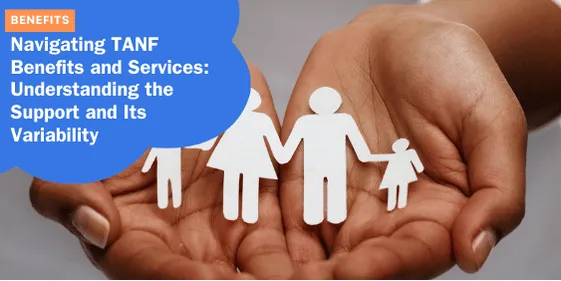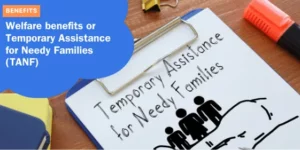Navigating TANF Benefits and Services: Understanding the Support and Its Variability

TANF Benefits and Services
Cash Assistance and Its Limitations
TANF provides crucial cash assistance to low-income families, but there are significant limitations to the support it offers.
Each state determines its own benefit levels, leading to a wide variation in aid across the country.
As of July 2021, the monthly cash benefits for a family of three varied from as little as $204 in Arkansas to as much as $1,098 in New Hampshire.
The median benefit was $498, covering just 27% of the federal poverty line.
These benefits are critical but often insufficient to meet all of a family’s basic needs.
Over the years, the real value of TANF benefits has declined due to inflation, exacerbating the financial strain on recipients.
Support Services
TANF isn’t just about cash assistance; it also offers a range of support services designed to help families achieve self-sufficiency.
Child Care
Quality child care is essential for parents looking to enter or return to the workforce.
TANF funds can be used to provide child care assistance, making it more feasible for parents to work or attend job training.
However, the availability and quality of child care services can vary significantly by state, affecting the overall impact.
Job Preparation and Training
One of TANF’s core purposes is to promote job preparation and employment.
States utilize TANF funds to offer job training programs, employment counseling, and other workforce development initiatives.
These services aim to equip recipients with the skills needed to secure stable and higher-paying jobs.
Again, the availability and effectiveness of these programs can differ widely from state to state.
Variability Across States and Tribal Governments
One notable aspect of TANF is its variability.
States and tribal governments have significant leeway in how they implement and manage their TANF programs.
This flexibility means that:
- ✅ Each state or tribal territory can run its TANF program differently, sometimes even calling it by a unique name.
- ✅ Eligibility criteria, benefit levels, and the types of services provided can vary widely from one state to another.
- ✅ States like California, for instance, operate their TANF programs under names like CalWORKS, reflecting local customization.
This state-level discretion means that the impact of TANF can differ depending on where a family lives, with some states offering more comprehensive support than others.
As we delve deeper into TANF, it’s essential to understand these fundamental aspects that shape its implementation and the varying experiences of the families it aims to help.
Eligibility Criteria
Eligibility for the Temporary Assistance for Needy Families (TANF) program can be quite complex due to the autonomy states have in managing it.
While state-specific variations are significant, there are some general requirements and specific factors that broadly govern who can qualify for TANF benefits.
General Eligibility Requirements
To be eligible for TANF, applicants must generally meet a few baseline criteria:
- ✅ Residency: Applicants must reside in the state where they are applying for TANF benefits.
- ✅ Citizenship: TANF recipients must be U.S. citizens, legal aliens, or qualified aliens. Immigrants who arrived in the U.S. after 1996 are subject to a five-year waiting period before they can receive TANF benefits, although states can use state funds to cover some of these individuals.
- ✅ Income Level: Applicants must have low or very low income. Each state sets its own income eligibility thresholds, which are often far below the federal poverty line.
Specific Eligibility Factors
Beyond these general guidelines, there are specific factors that can determine an applicant’s eligibility for TANF:
- ✅ Family Composition: Applicants must have a child under the age of 18 in their household or be pregnant. In some cases, if the applicant is under 18 and is the head of the household, they can still qualify.
- ✅ Employment Status: Applicants must be unemployed, underemployed, or about to lose their job. States often assess the employment status to ensure that TANF recipients are within the program’s income guidelines.
State-Specific Variations
Each state has the flexibility to define “needy” and set its own income and asset limits for TANF eligibility.
For example:
- ✅ Income Levels: Some states may set the income eligibility criteria at a percentage of the federal poverty line, which can vary widely. In July 2021, TANF benefits ranged significantly—from $204 for a family of three in Arkansas to $1,098 in New Hampshire.
- ✅ Asset Limits: States also decide on allowable asset limits that families can have while still qualifying for TANF assistance.
- ✅ Family Caps: Some states implement policies that deny additional benefits to families who have another child while already receiving TANF benefits.
- ✅ Drug Convictions: In certain states, individuals with felony drug convictions might face lifetime bans from receiving TANF benefits, whereas other states have partially or fully lifted these bans.
Understanding these nuances is vital for applicants and caseworkers alike.
The TANF program’s flexibility can be both an advantage and a challenge.
Each state’s version of TANF can look quite different, reflecting the unique needs and policy choices of its government.
Moving forward, we will delve into the specifics of the benefits and services that TANF provides, exploring how different forms of support vary across states and the critical role they play in helping families achieve greater economic stability.
Accessing and Managing TANF Benefits
Application Process
Applying for TANF is the first step toward receiving financial aid and support.
Generally, you’ll need to provide:
- ✅ Proof of residence in the state
- ✅ Identification and Social Security numbers for all family members
- ✅ Proof of income, such as pay stubs or unemployment benefits
- ✅ Information regarding your children, like birth certificates or school records
After submitting your application, expect a review process that may include an interview with a caseworker.
Some states may also require you to attend a job preparation workshop as part of the application process.
Be prepared to provide additional documents as requested to ensure your application is processed smoothly.
✅ Access the official TANF website now and guarantee your benefit.
TANF OFFICIAL WEBSITE





